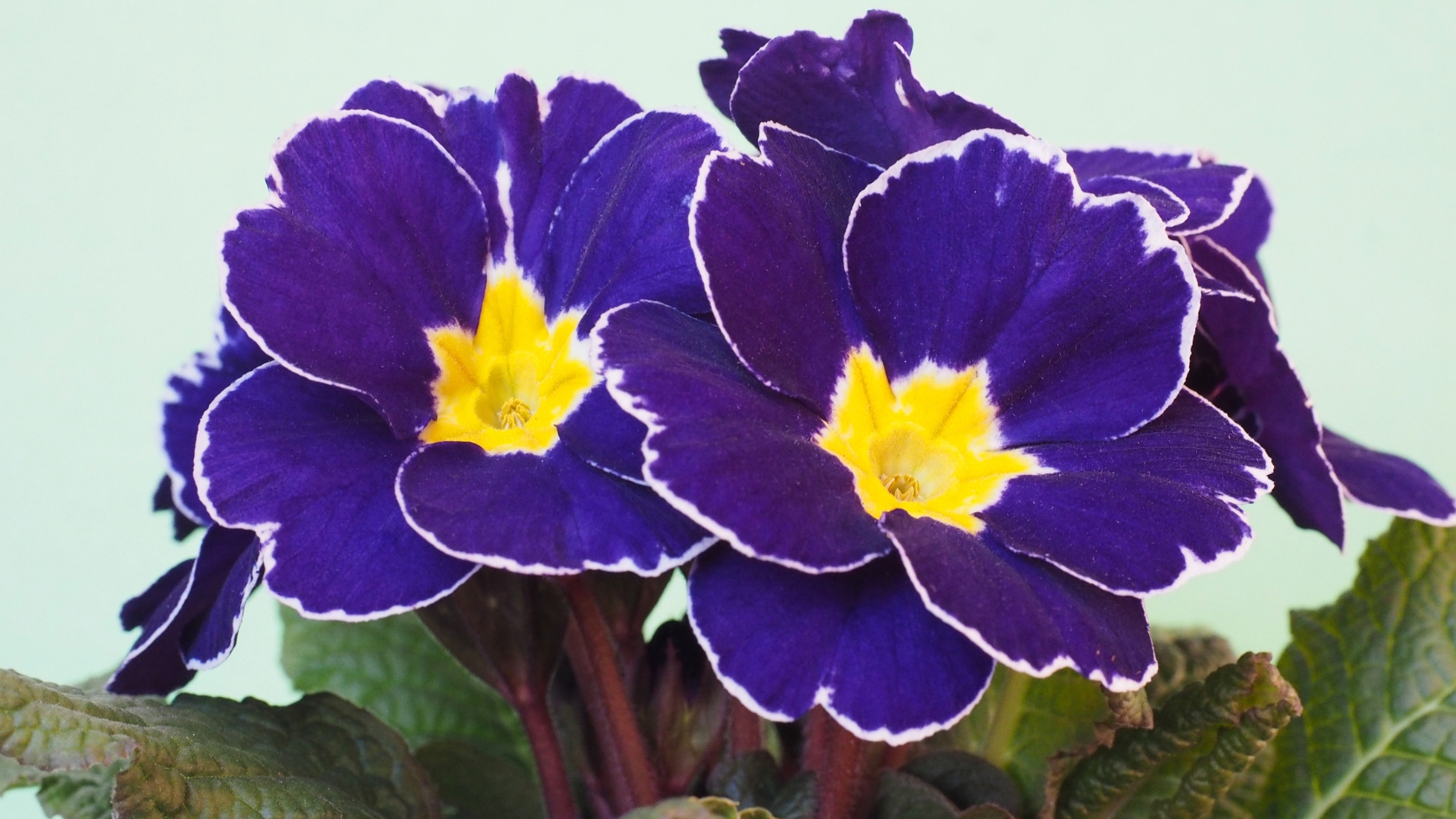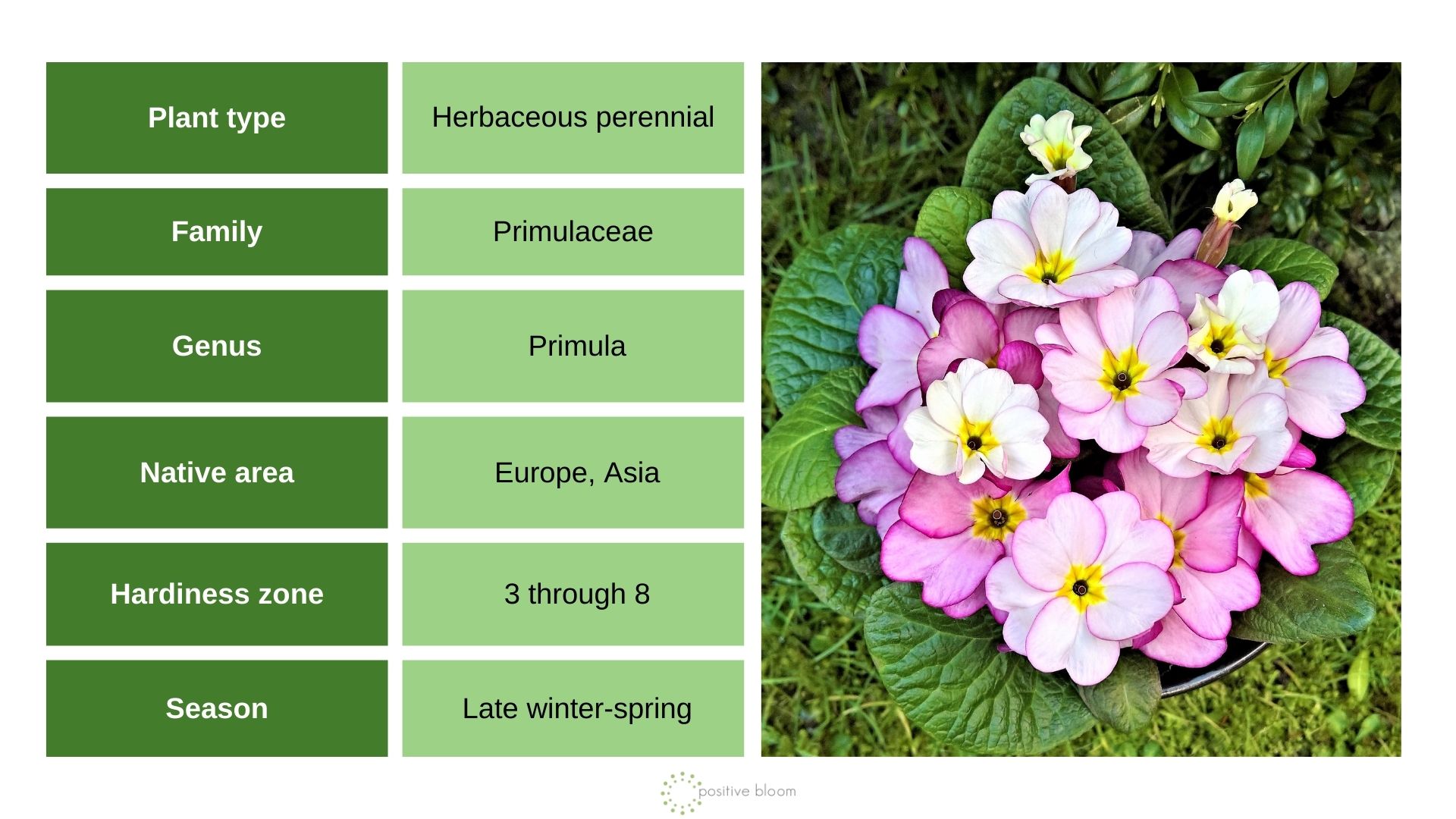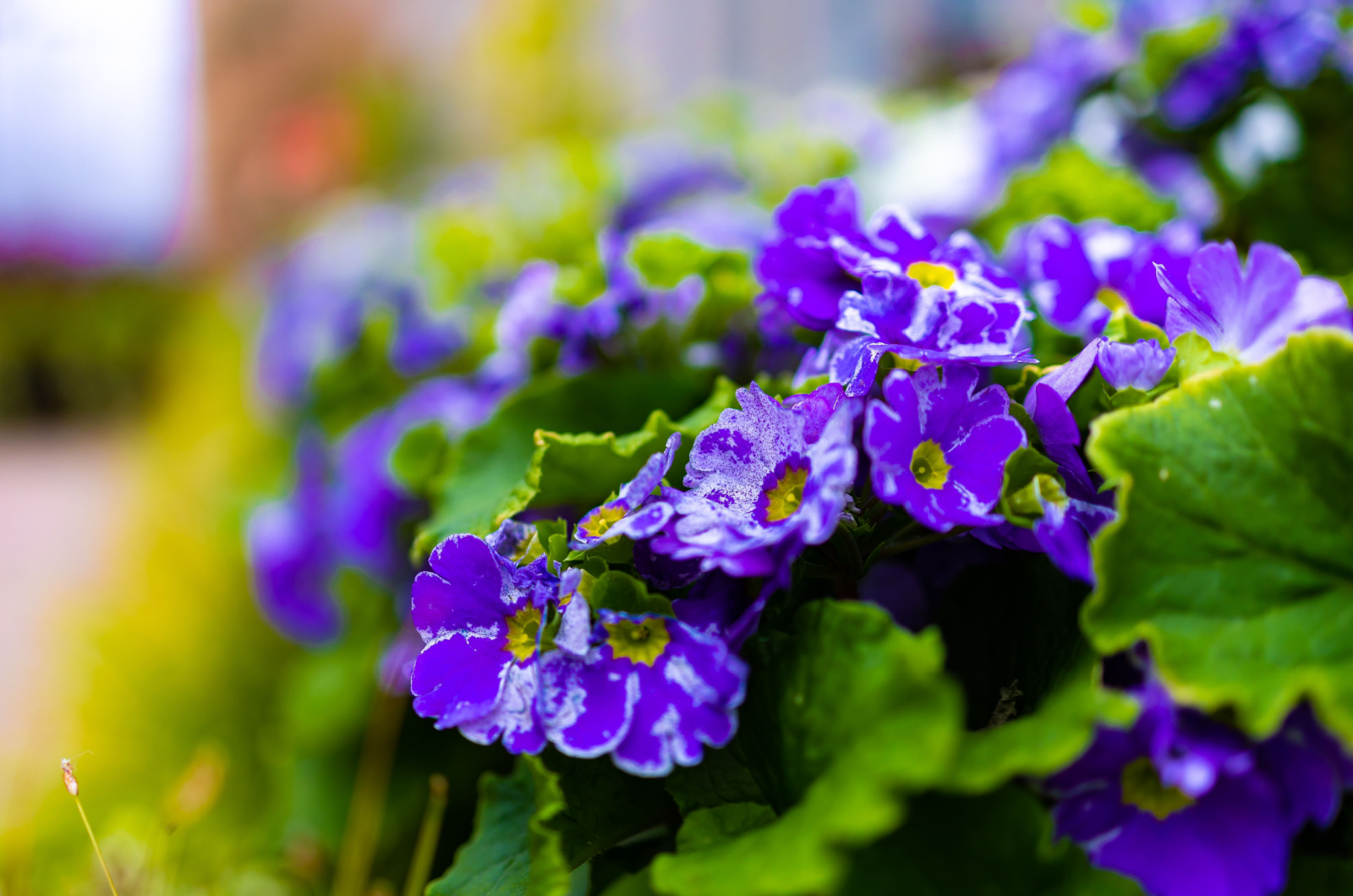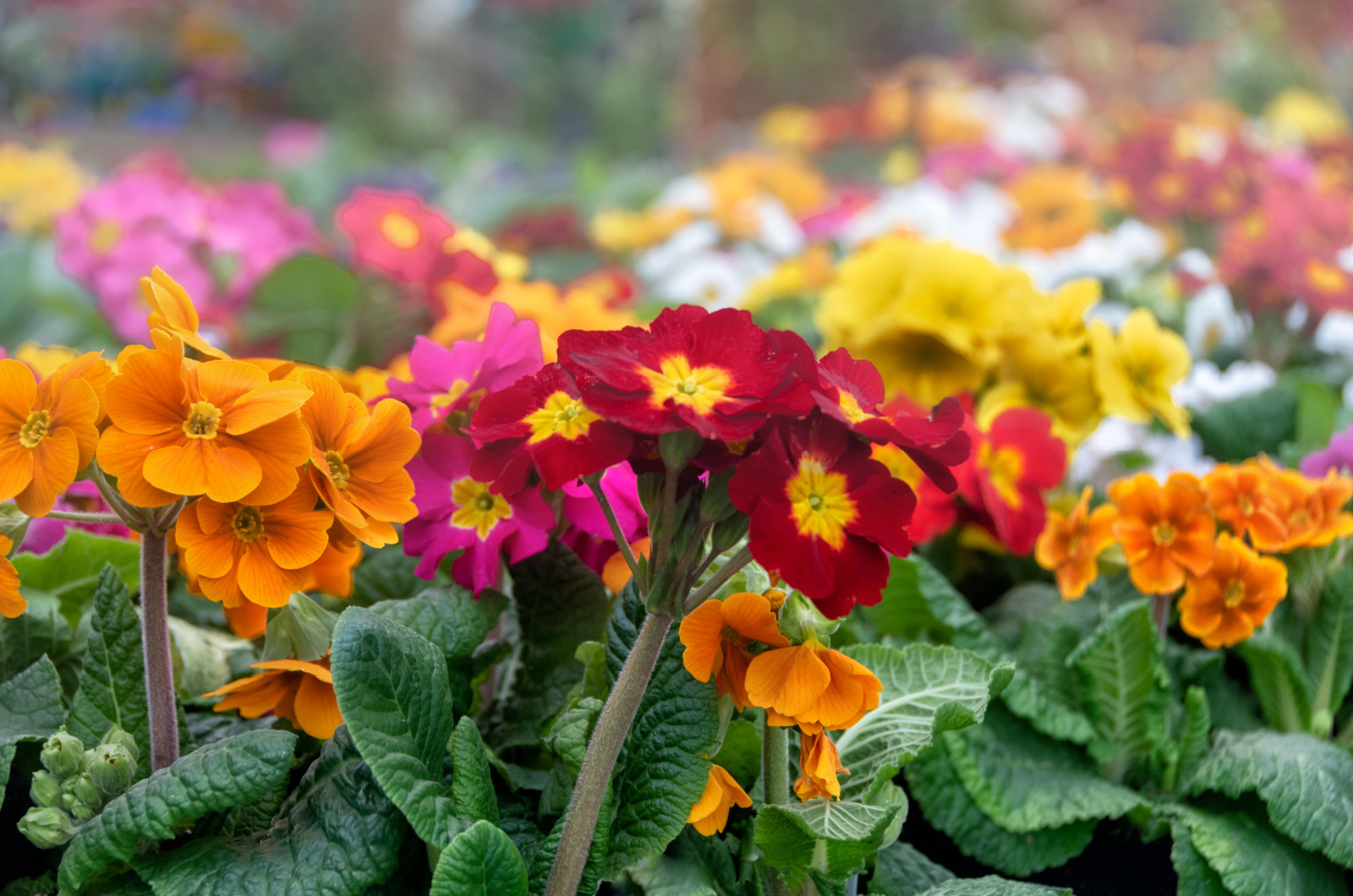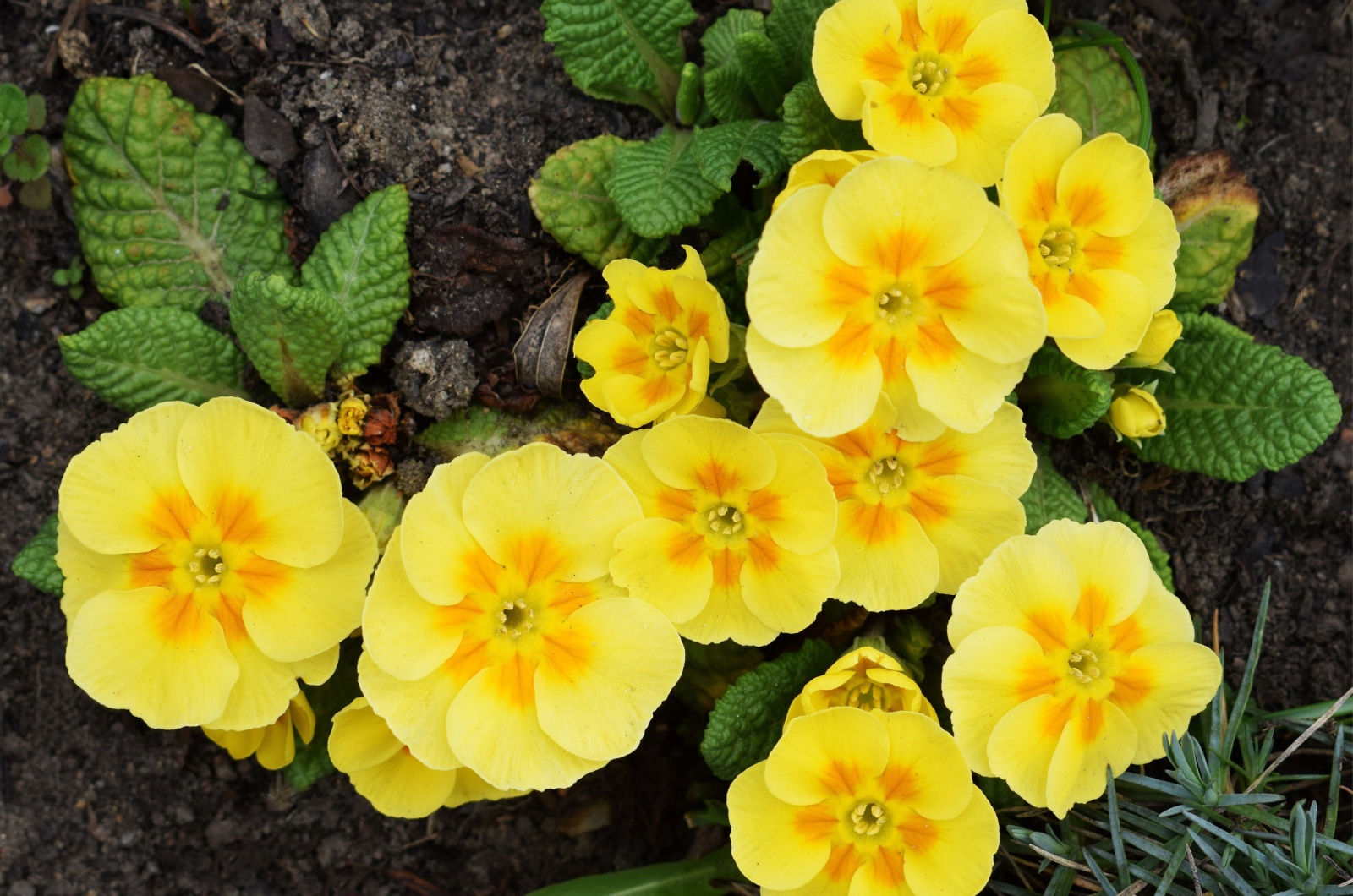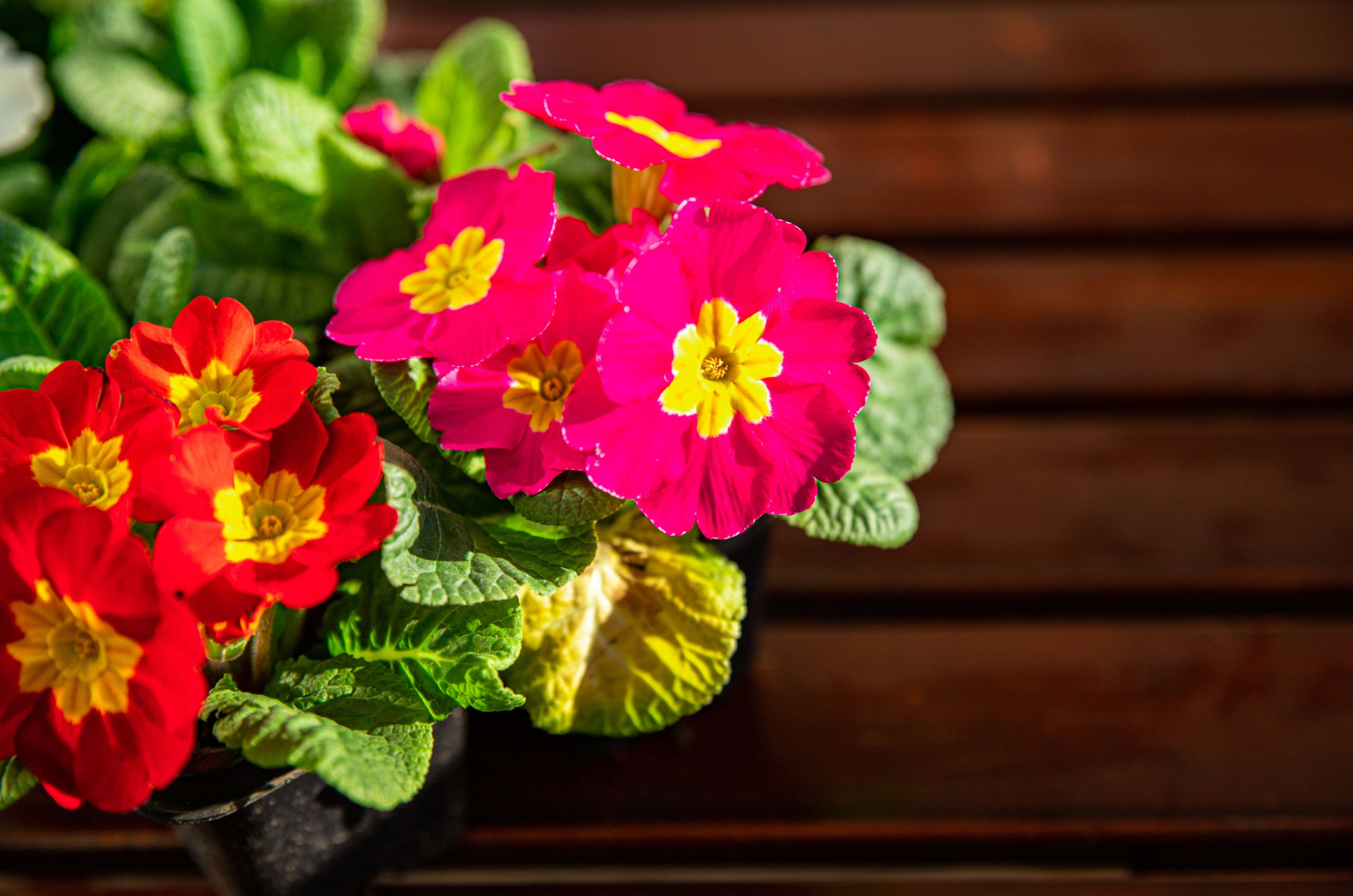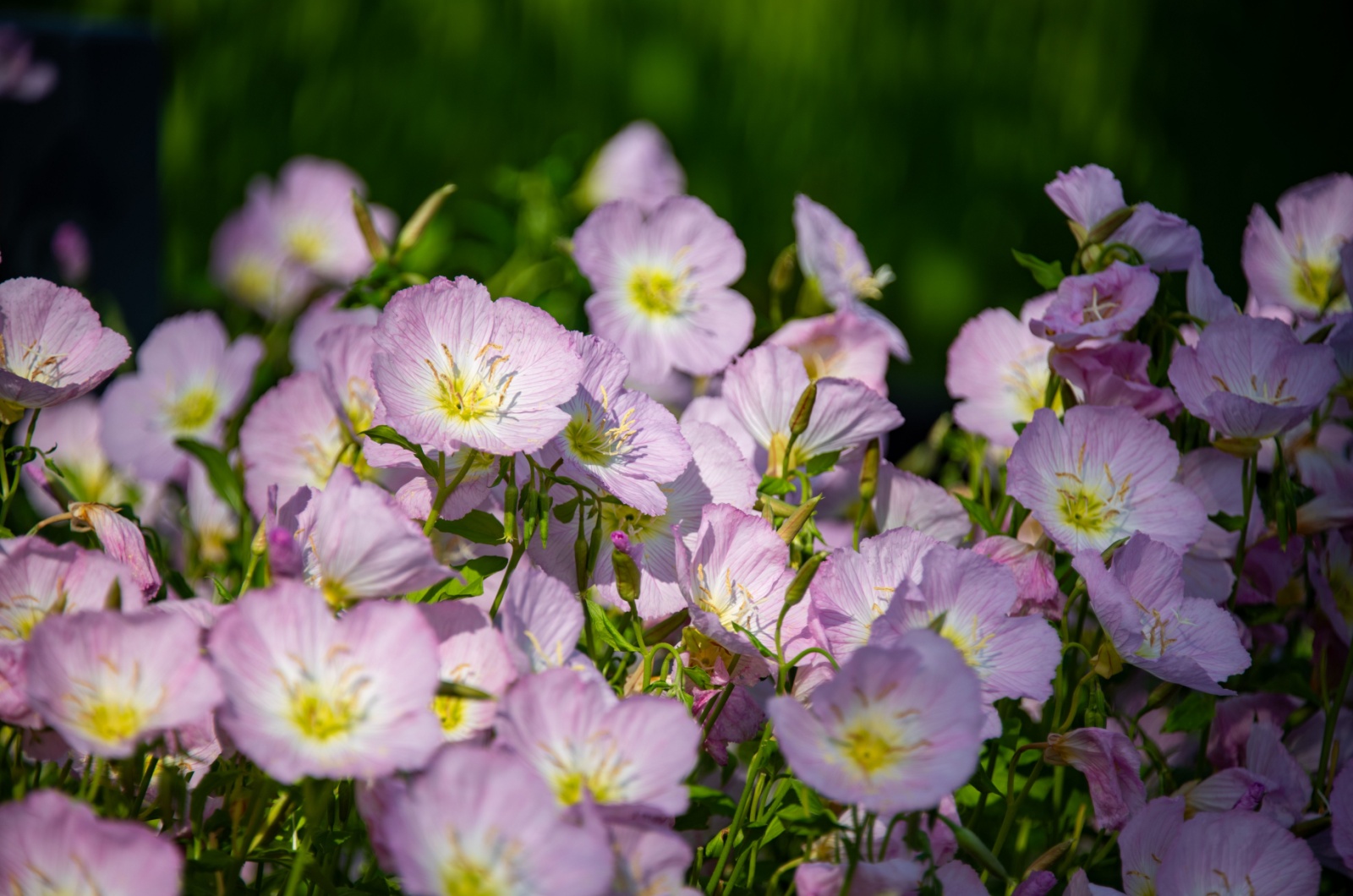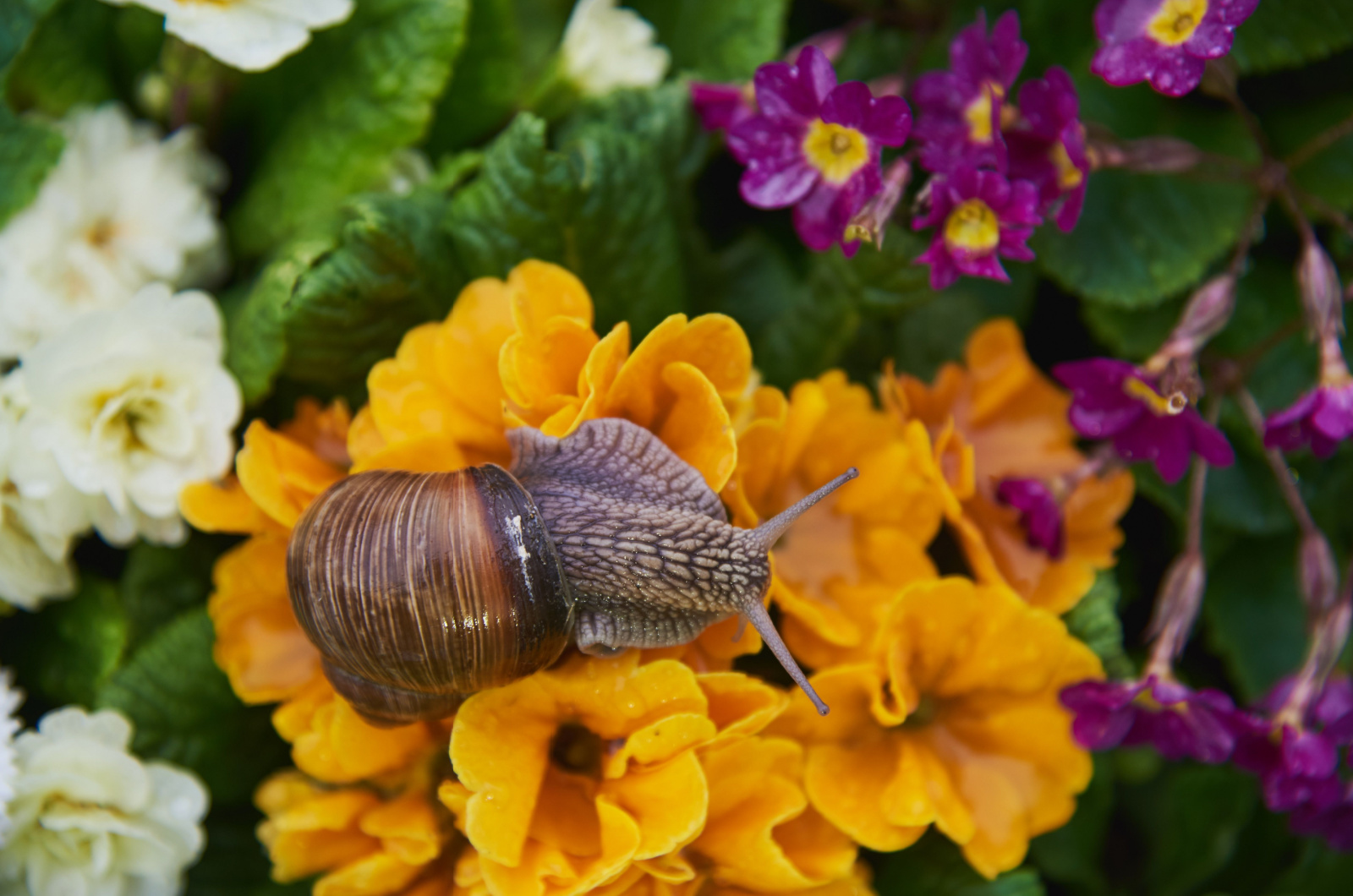Get ready for the first colorful flower display of the season. Primroses are cheerful flowers that show up early in the garden and signal that spring is on the way.
These lovely plants are super easy to grow – all you have to do is plant them on time and provide optimal growing conditions. Primroses are not needy, but you’ll have to keep an eye out for pests and diseases!
In this article, we are going to share some tips on how to plant and grow primrose flowers, and also help you pick the best variety for your garden.
Let’s make your garden vibrant with blooming primroses!
How To Plant Primrose Flowers
Planting primrose flowers is an easy and joyful task. To ensure these perennials return each year, it’s crucial to plant them correctly.
Choose a spot with well-draining soil and partial shade, and gently place the primrose plants into the ground. When you plant, dig a hole twice the size of the plant to help it establish faster.
You can use one-third organic matter and two-thirds garden soil to fill out the rest of the hole – organic matter can be sea soil, worm castings, compost, or manure. Gently pack the soil around the plant after filling the hole up to the plant’s crown.
Water them well to help them settle in, and watch as these delightful flowers bring a burst of color to your garden. With their love for cool temperatures, primroses thrive in early spring, creating a beautiful and welcoming garden display.
Popular Varieties
• Japanese primrose – unique primrose variety with pink, red, purple, and white flowers that have twisted petals. Pointed green leaves combine well with these delicate flowers.
• Common primrose – a small variety known for its wrinkled leaves and five-petaled flowers with pink, purple, yellow, and white colors. This cultivar is great for attracting pollinators early in the season.
• Polyanthus primrose – a larger cultivar with colorful flowers that create a showy flower display.
• Drumstick primula – a charming species recognized by its globe-shaped flowers that grow on a single slender stem. This variety creates an interesting appearance in the garden.
• Cowslip primula – a smaller variety with yellow or orange, bell-shaped flowers that grow on slender stalks. The flowers have a lovely fragrance, which is why this variety is super popular.
If you are looking for more flowers that bloom in colder temperatures, make sure to check: 25 Gorgeous Flowering Plants That Bloom In Winter
Soil Requirements
Primula varieties grow well in well-draining soil that is also rich in nutrients. Check if the soil is light by grabbing and squeezing it in your hand – if it crumbles, it can be used for primroses; if it stays in a ball-like shape, it has too much clay and won’t be able to drain adequately.
To make the soil loose, you can add coconut coir or peat along with lots of organic matter. Avoid adding sand because it can’t retain moisture well.
Related: Improve Your Garden Soil With These 5 Simple Methods
Water Requirements
Primroses thrive in moist soil – moist, not soggy – so you have to make sure to water them properly. For starters, you can add mulch to help with water retention.
Avoid overwatering at all costs because primroses can easily develop root and crown rot.
Overhead watering is not a good idea because the flowers and leaves might get wet, which attracts various fungal diseases. You can either water them early in the morning so that the leaves have enough time to dry, or practice bottom watering.
Light Requirements
Primroses can adapt to growing in partial shade – plant them under a deciduous tree or provide some afternoon shade if you live in a warmer climate.
Too much sun can lead to crispy and sunburned leaves. Plus, the flowers would fall off quickly. On the contrary, super shady areas will lead to leggy primroses that won’t produce any flowers. Remember, balance is the key!
Fertilizer Requirements
Although primroses like nutrient-rich soil, you shouldn’t add too much fertilizer as it might burn these delicate plants. Brown-tipped leaves are usually a sign of overfertilization.
For primroses to grow and thrive, you can use a slow-release fertilizer before blooming or simply add some organic matter to the soil. Compost tea or worm-casting tea are also good because they are filled with beneficial microbes.
This might be useful:
Temperature Requirements
Primula varieties grow well in cooler temperatures, which is why they can bloom so early in the season.
We’ve already mentioned that they grow well in zones 3 through 8. So, if you live in these regions, you are good to go!
Propagation
It’s super easy to propagate primroses. One common method is division, where you carefully separate mature clumps of primroses into smaller sections, ensuring that each section has roots attached.
Then, you should plant these divisions in a suitable location with well-draining soil and partial shade. If you are just about to plant primroses for the first time, you can either buy seeds or bare roots.
Pests And Diseases
Slugs and snails also admire those wonderful flowers. Well, that’s not the only thing that they do – these pests can leave your primroses filled with holes and trails of slime. You can hand-pick them or use traps to get rid of snails and slugs.
Another pest you should watch out for are vine weevils, small black beetles that can be found on primula varieties. These are easily removed with soapy water, but their larvae are worse because they feed on the plant’s roots and there’s no easy way to get rid of them.
You can introduce Hb nematodes to get rid of larvae, or try and hand-pick them. Sticky traps might also help to eliminate vine weevils.
Root and crown rot can be removed by transplanting primroses and cutting off damaged roots. To prevent these issues, proper drainage is required.
Look out for botrytis as well – this is a fungus that can cause foliage necrosis. If you avoid overhead watering, you’ll most likely protect your plants from botrytis. However, if you do notice some mushy patches or mold on the leaves, remove them immediately and apply fungicides.
Related: What Are Trap Plants And How To Use Them In The Garden

